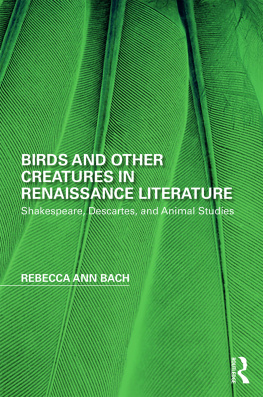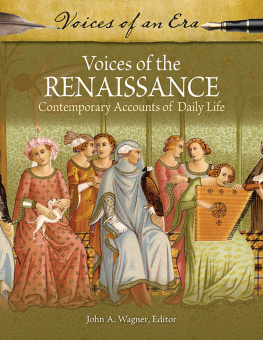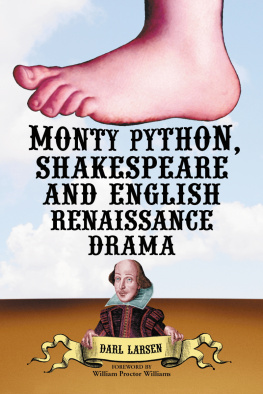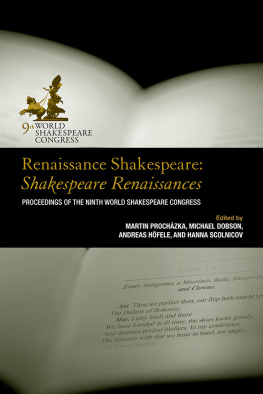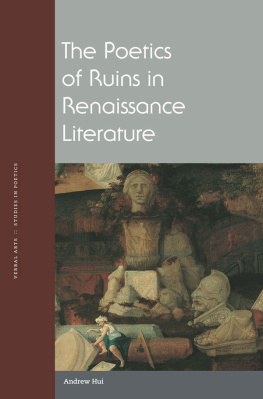Birds and Other Creatures in Renaissance Literature
This book explores how humans in the Renaissance lived with, attended to, and considered the minds, feelings, and sociality of other creatures. It examines how Renaissance literature and natural history display an unequal creaturely world: all creatures were categorized hierarchically. However, post-Cartesian readings of Shakespeare and other Renaissance literature have misunderstood Renaissance hierarchical creaturely relations, including human relations. Using critical animal studies work and new materialist theory, Bach argues that attending closely to creatures and objects in texts by Shakespeare and other writers exposes this unequal world and the use and abuse of creatures, including people. The book also adds significantly to animal studies by showing how central bird sociality and voices were to Renaissance human culture, with many believing that birds were superior to some humans in song, caregiving, and companionship. Bach shows how Descartes, a central figure in the transition to modern ideas about creatures, lived isolated from humans and other creatures and denied ancient knowledge about other creatures minds, especially bird minds. As significantly, Bach shows how and why Descartes ideas appealed to human grandiosity. Asking how Renaissance categorizations of creatures differ so much from modern classifications, and why those modern classifications have shaped so much animal studies work, this book offers significant new readings of Shakespeares and other Renaissance texts. It will contribute to a range of fields, including Renaissance literature, history, animal studies, new materialism, and the environmental humanities.
Rebecca Ann Bach is Professor of English at the University of Alabama at Birmingham, USA.
Perspectives on the Non-Human in Literature and Culture
Series Editor: Karen Raber
https://www.routledge.com/literature/series/PNHLC
1Birds and Other Creatures in Renaissance Literature
Shakespeare, Descartes, and Animal Studies
Rebecca Ann Bach
Birds and Other Creatures in Renaissance Literature
Shakespeare, Descartes, and Animal Studies
Rebecca Ann Bach

First published 2018
by Routledge
711 Third Avenue, New York, NY 10017
and by Routledge
2 Park Square, Milton Park, Abingdon, Oxon OX14 4RN
Routledge is an imprint of the Taylor & Francis Group, an informa business
2018 Taylor & Francis
The right of Rebecca Ann Bach to be identified as author of this work has been asserted by her in accordance with sections 77 and 78 of the Copyright, Designs and Patents Act 1988.
All rights reserved. No part of this book may be reprinted or reproduced or utilized in any form or by any electronic, mechanical, or other means, now known or hereafter invented, including photocopying and recording, or in any information storage or retrieval system, without permission in writing from the publishers.
Trademark notice: Product or corporate names may be trademarks or registered trademarks, and are used only for identification and explanation without intent to infringe.
Library of Congress Cataloging-in-Publication Data
A catalog record for this book has been requested
ISBN: 978-1-138-67300-7 (hbk)
ISBN: 978-1-315-56221-6 (ebk)
Typeset in Sabon
by Apex CoVantage, LLC
For Joseph
Contents
This book was written over many years and has benefitted mightily from the groundbreaking work on Renaissance animals that preceded it. Were it not for the scholarship of Bruce Boehrer, Erica Fudge, Laurie Shannon, Karen Raber, and many others, this book would be immeasurably poorer. My scholarly debts are recorded in the texts and notes. Although in this books pages I will contest and expand upon some contentions, particularly about the significance of mammals in the Renaissance, this book should be read with these scholars work in mind so that my readers can benefit from the great expansion of knowledge about Renaissance creatures that is in process as I write. I owe a great debt to Karen, who read the manuscript and offered essential help. This book is much better than it would otherwise have been. Autumn Spaldings work for the press at the final stages has also improved the book immeasurably.
The community of Renaissance scholars working on creatures is unparalleled in its generosity, at least in my experience, and I am grateful to have worked within it. On an institutional level, the Shakespeare Association of America has welcomed my work on this subject for the last nine years. That wonderful organization provided me the opportunity to share work at early stages, and my thinking about creatures has benefited mightily because of the seminars in which I participated. Thank you to all of the seminar members over the years who sent comments, discussed papers, and shared ideas.
I have also been lucky enough to teach two courses on creatures for the UAB Honors Program, one called Animal Studies/Animality Studies and one that I called, after Coetzee, The Lives of Animals. I am thankful to the students in those seminars who challenged me and whose excitement about the creatures they live with and love made them careful readers of texts. Teaching books about creatures and theory about creatures to these students and to other great UAB students forced me to think and rethink my ideas.
My students and colleagues at the University of Alabama at Birmingham have provided the perfect milieu in which to do this intellectual work. I am particularly indebted to my colleagues in the English department, especially Vic Camp, Alison Chapman, Anamaria Santiago, Danny Siegel, Lauren Slaughter, Gale Temple, and Adam Vines. At the finishing stages of writing, Alison, Danny, and Gale provided critical help. The book could not have been completed without the support of my department and the sabbatical leave provided by my former dean, Thomas M. DiLorenzo, who understands the value of scholarship in the humanities.
My family and friends have been there for me throughout. I thank Beth McGowan for great conversations, and Natasha Korda, Deborah Feingold, Nancy Sokolove, Alison, and Danny for always listening. Thank you also to my extended New York family, Steve and Carolyn Ellman, Delia and Eugene Mahon, and Lynne Rubin, and to my beloved father, Sheldon Bach mother, Phyllis Beren and the amazing Jay Bach. My step-daughter, Daisy Wood, became a wonderful addition to my family in the final stages of writing. This book is dedicated to my husband, Joseph P. Wood, my partner in imagination and life.
Throughout this book, I have transcribed Renaissance English texts without modernizing spelling, punctuation, italics, or capitalization. This is a deliberate choice that, unfortunately, may cause slight difficulties in reading. One compensation for these potential difficulties is that we can see how English Renaissance writers used flexible spelling and punctuation to poetic and semantic effects. I call attention to these kinds of usages in the book. In addition, modernizing Renaissance texts can encourage us to see them as belonging fully to our world. My argument is that these texts do not, in fact, share all of our assumptions about creatures. Preserving their bibliographic features can help us to see them as a little strange.

